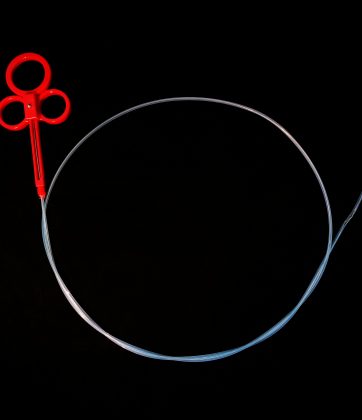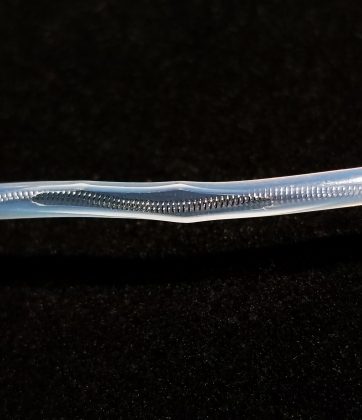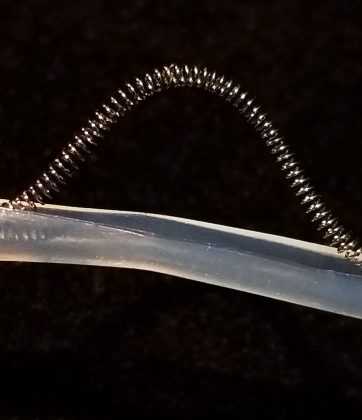Eosinophilic Esophagitis (EoE) is a chronic inflammatory disease of the esophagus that results in a poor quality of life and debilitating burden to patients of all ages. The primary symptoms of the disease are difficulty swallowing (dysphagia), food impaction, failure to thrive, and chest pain often leading to emergency visits. Currently, EoE cannot be cured, although symptoms can be treated to provide the patient temporary relief. EoE monitoring is expensive, and represents a substantial health care burden. The current process for evaluating EoE is an upper endoscopy with biopsies where multiple samples of tissue are taken from the esophagus. Diagnosis and monitoring of EoE requires multiple endoscopies, which presents a substantial health care burden. These procedures are expensive, invasive, require anesthesia, and result in time off school and work. In addition, patients must wait several days for biopsy results which guide therapy changes.
In conjunction with Dr. Kathy Peterson and Dr. Gerald Gleich from the School of Medicine, we have developed a new system for rapid diagnosis of EoE. This system utilizes a colorimetric assay that accurately detects eosinophilic infiltration by detecting granule proteins in the esophageal lumen. Samples are collected using a specialized catheter which does not require an endoscope or anesthesia. We are currently performing benchtop and clinical testing with the goal of providing a clinically validated, inexpensive, minimally invasive and rapid procedure for diagnosing EoE.





